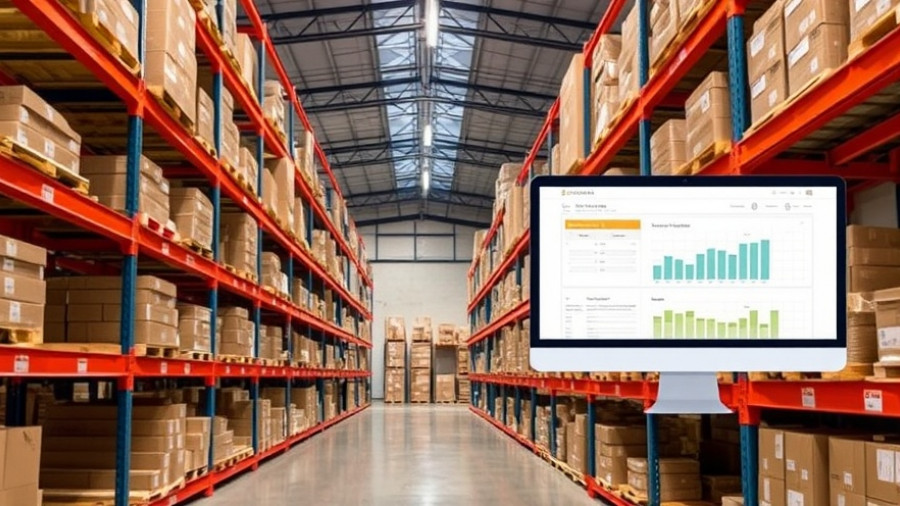
Understanding Inventory Software Costs: A Comprehensive Overview
In today's fast-paced business environment, inventory software isn’t just an accessory—it’s a necessity. For professionals and business owners, particularly in e-commerce, understanding the costs associated with inventory management software is critical. This article explains various factors affecting the pricing and provides insights to help you make informed decisions that keep your budget intact while optimizing your operations.
What Affects Inventory Software Pricing?
The cost of inventory software can fluctuate substantially based on several key factors:
- Software Features: The ultimate price tag often hinges on the features you choose. Basic plans provide essential tools like stock tracking, while advanced features such as predictive analytics or multi-location management significantly increase costs.
- Business Scale: Larger organizations typically incur higher expenses due to the need for more licenses and user support, as they handle a greater volume of data.
- Deployment Model: Opting for cloud-based solutions can lead to lower initial costs compared to on-premises installations, which require hefty upfront investments and ongoing IT support.
- Vendor Reputation: Established vendors may charge a premium due to their history of reliability, better support, and customer satisfaction ratings.
Types of Inventory Software Solutions
Businesses can select from several inventory solutions tailored to their operational needs:
- On-Premises Systems: Installed directly on your hardware, offering high control but requiring substantial upfront payment and ongoing technical backing.
- Cloud-Based Solutions: Accessible from any location, these typically save on hardware costs and are offered on a subscription basis—ideal for dynamic business environments.
- Hybrid Systems: A combination of both, providing flexibility with features like remote access and local data control. They balance control and accessibility for various operational models.
Evaluating Customization and Integration Costs
While customizing inventory software can optimize your operations, it also comes with an increased cost. Here’s what to consider:
- Integration with Existing Systems: Linking your inventory software with accounting or CRM systems may incur additional costs but minimizes disruptions and enhances efficiency.
- Custom Features: Tailored functionalities can boost operational efficiency; however, they often require more development resources. Evaluate whether the benefits justify the added expense.
Choosing Between Subscription and One-Time Fees
Two common pricing models prevail in the inventory management software landscape:
- Subscription Fees: Typically lower upfront costs, this approach includes updates and support, but can accumulate in the long run.
- One-Time Purchase: Higher initial investment is required, but may present a more economical option over time if equipped with long-term support contracts.
The Hidden Costs You Must Consider
It’s easy to overlook additional expenses that can inflate your software budget. Here are some often neglected costs:
- Training and Support: Preparing your team may add costs, and ensure that ongoing support is included in your package to mitigate any operational disruptions.
- Data Migration: Transitioning existing data integrates complexities that aren’t always straightforward—these can lead to hidden charges.
Practical Insights on Making Smart Choices
Armed with this knowledge, you can streamline your inventory management process while keeping costs manageable. Here are principal insights:
- Understand Your Unique Needs: Carefully assess your business's operational requirements to avoid unnecessary bells and whistles that drive costs up.
- Evaluate ROI: A robust inventory management system can drive revenue by enhancing productivity and reducing costly errors like stockouts and over-ordering. Measure savings against an initial investment to see tangible benefits.
- Trial Versions: Always opt for free trials where possible. This hands-on approach enables you to test and see if the software aligns with your workflow before committing financially.
Final Thoughts on Inventory Software Selection
Choosing the right inventory management software is a pivotal decision that impacts your business's efficiency and growth. By weighing the right factors, knowing the hidden costs, and understanding the different pricing models, you can make the best choice for your unique needs. Whether you’re leveraging cloud-based solutions or embracing robust one-time purchases, remember—investing in the right system pays off significantly in the long run.
Are you ready to take your inventory management to the next level? Explore your options today and make an investment that will streamline your operations for years to come.
 Add Row
Add Row  Add
Add 




Write A Comment